Ever since Apple unveiled its first iPhone in 2007, the device has been more than just a gadget. It’s become an essential tool, a status symbol, an emblem of innovation, and a hallmark of quality.
But with each new model, a common question pops up – “What’s the price?”
More often than not, the response is met with a surprised gasp as the cost seems to climb with each new release. But have you ever thought about how these price tags fare when you take inflation into account?
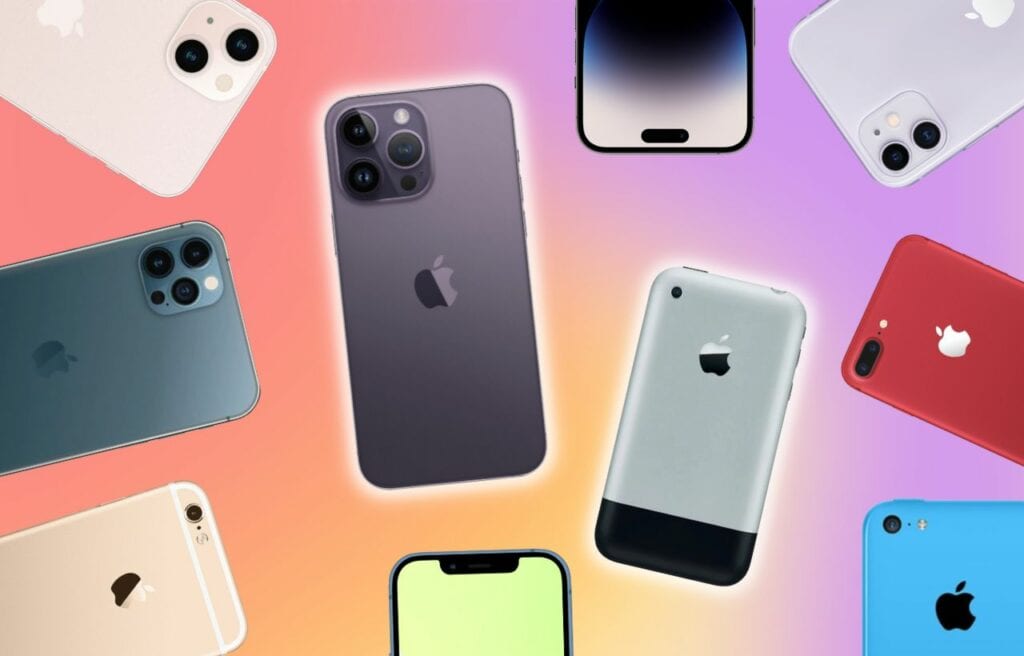
With the recent wave of reports of inflation and skyrocketing prices affecting various sectors of the economy, we were particularly intrigued to discover how iPhone prices, when adjusted for inflation and purchasing power, actually fared over the years.
That’s what we attempted to find out in this study. By leveraging historical data and the US Inflation Calculator tool, we adjusted the release prices of every single iPhone model for inflation. This allows us to compare apples to apples – the real costs of iPhones at their respective release dates.
We’ll go on a deep-dive through the rollercoaster that is iPhone pricing history, pinpointing the model that takes the crown for being the priciest ever and seeing just how affordable these pocket supercomputers really have been over the years.
The Most Expensive iPhones at Launch
Here’s a unique perspective on the true costs of iPhones by adjusting their release prices for inflation.
Top 5 Priciest iPhones at Launch (Base Models)
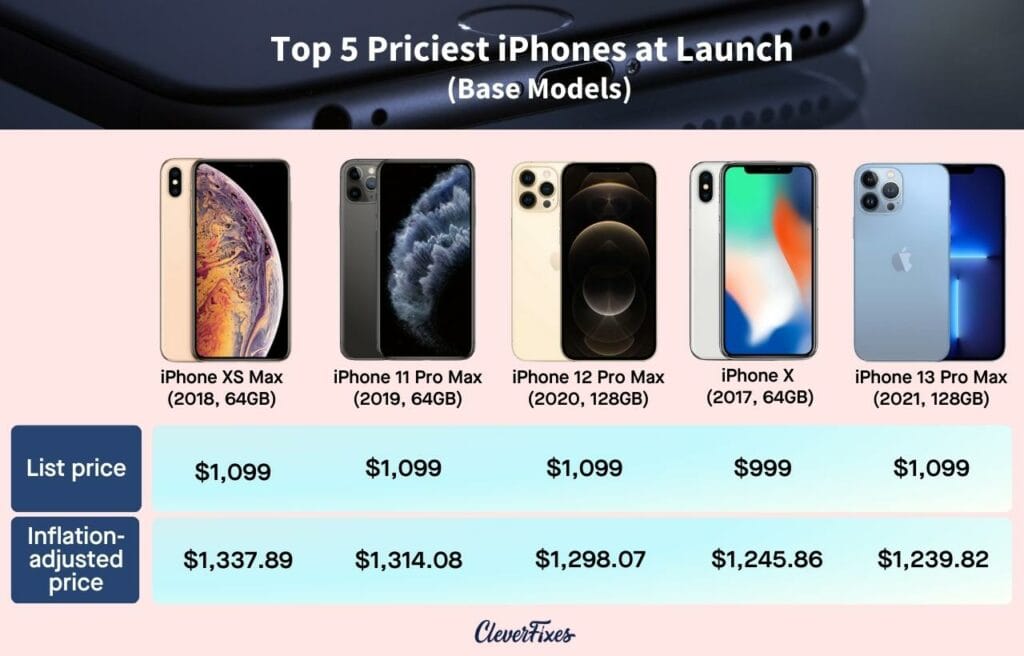
- iPhone XS Max (2018, 64GB) – List price – $1,099; Inflation-adjusted price – $1,337.89
- iPhone 11 Pro Max (2019, 64GB) – List price – $1,099; Inflation-adjusted price – $1,314.08
- iPhone 12 Pro Max (2020, 128GB) – List price – $1,099; Inflation-adjusted price – $1,298.07
- iPhone X (2017, 64GB) – List price – $999; Inflation-adjusted price – $1,245.86
- iPhone 13 Pro Max (2021, 128GB) – List price – $1,099; Inflation-adjusted price – $1,239.82
The iPhone XS Max, unveiled on September 12, 2018, made history as Apple’s first leap beyond the $1,000 mark for base prices, and there’s a good reason.
The device boasts a 6.5-inch Super Retina HD display, the biggest Apple offered in 2018. It also came with improved water resistance, a quicker A12 Bionic chip, and storage options going up to 512GB.
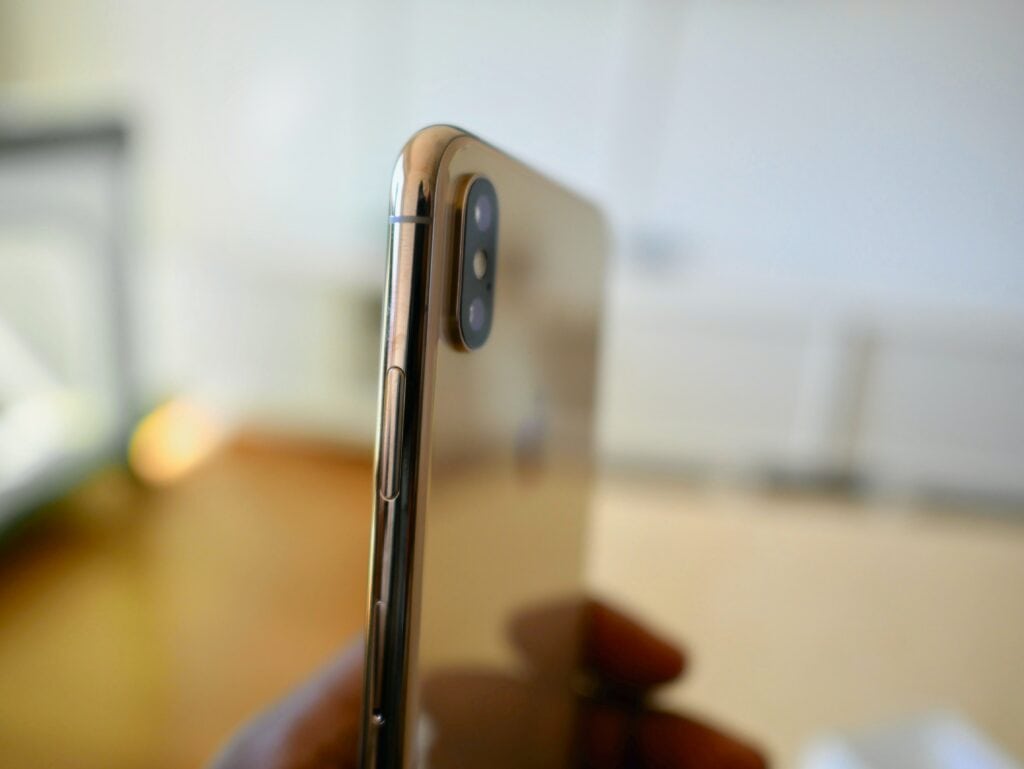
The standard model, priced at $1,099 for 64GB, marked a new chapter in premium smartphone pricing. When adjusted for inflation up to 2023, the price of the iPhone XS Max’s base model skyrockets to an astounding $1,337.89, making it the priciest iPhone released (base model).
Top 5 Priciest iPhones at Launch (Max Storage Models)
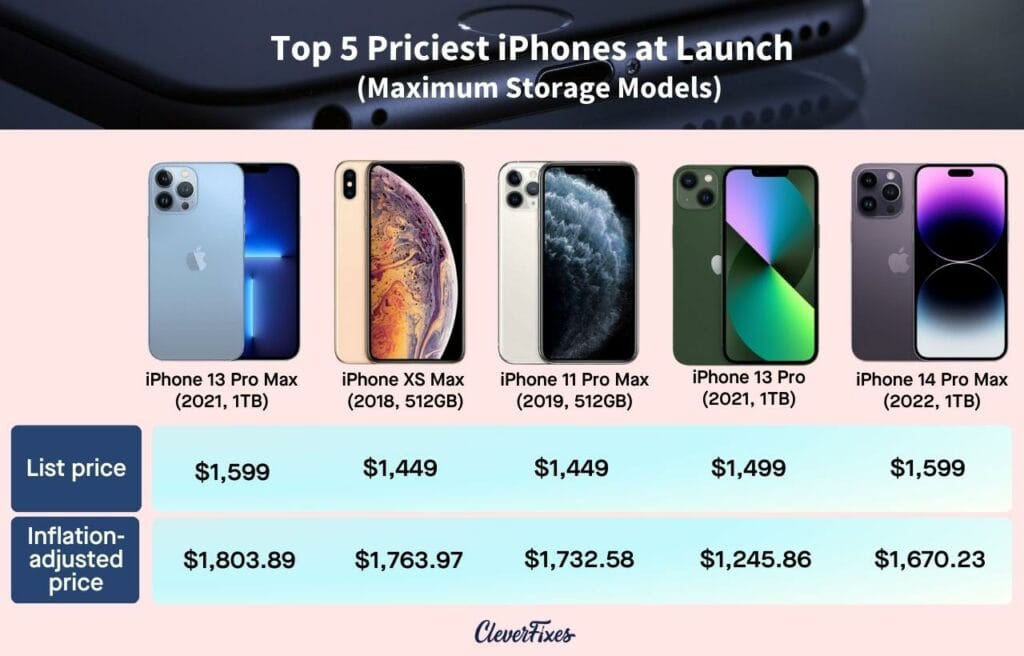
- iPhone 13 Pro Max (2021, 1TB) – List price – $1,599; Inflation-adjusted price – $1,803.89
- iPhone XS Max (2018, 512GB) – List price – $1,449; Inflation-adjusted price – $1,763.97
- iPhone 11 Pro Max (2019, 512GB) – List price – $1,449; Inflation-adjusted price – $1,732.58
- iPhone 13 Pro (2021, 1TB) – List price – $1,499; Inflation-adjusted price – $1,691.08
- iPhone 14 Pro Max (2022, 1TB) – List price – $1,599; Inflation-adjusted price – $1,670.23
Launched on September 14, 2021, the iPhone 13 Pro Max was another high-end device from Apple.
It had a standout feature: a massive 1TB storage— a response to the rising demand for bigger storage on smartphones. Top-of-the-line camera systems, ProMotion technology for a 120Hz refresh rate, and a new A15 Bionic chip were its main attractions.
Despite the hefty sticker price of $1,599 for the 1TB model, the device sold like hotcakes. It just goes to show customers are willing to shell out big bucks for high-end features. When you consider inflation, the 2023 price of this model comes to a record-breaking $1,803.89 – making it the highest-priced iPhone at launch when looking at the maximum storage variant.
The Cheapest iPhones at Launch
Price tags aren’t always about the biggest numbers. There’s also worth in looking at the iPhones that were the most budget-friendly at their respective launches.
Top 5 Most Affordable iPhones at Launch (Base Models)
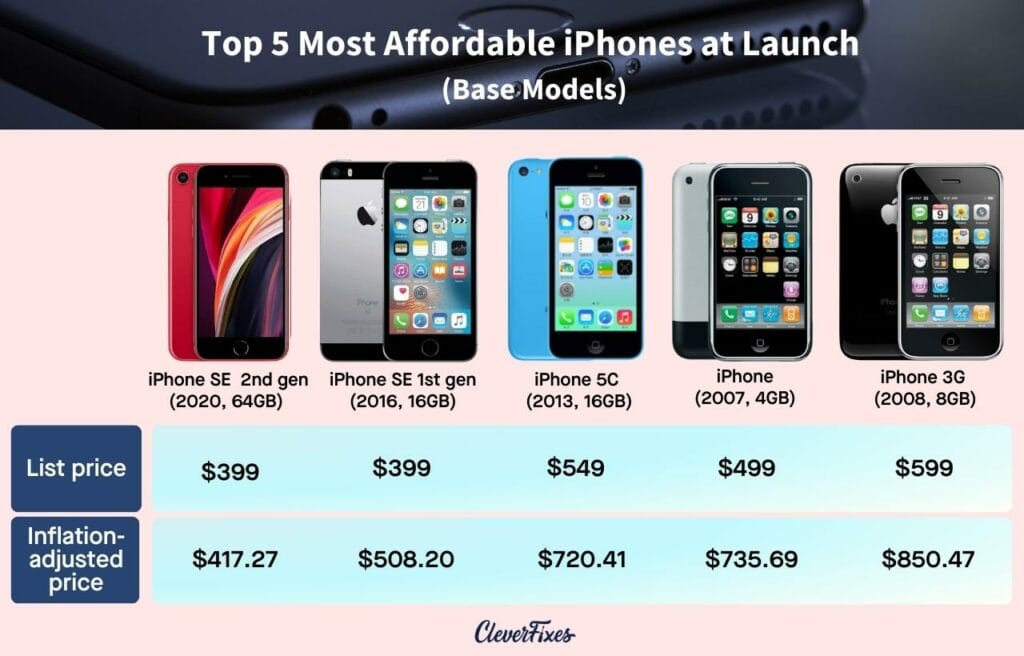
- iPhone SE (2nd gen) (2020, 64GB) – List price – $399; Inflation-adjusted price – $417.27
- iPhone SE (1st gen) (2016, 16GB) – List price – $399; Inflation-adjusted price – $508.20
- iPhone 5C (2013, 16GB) – List price – $549; Inflation-adjusted price – $720.41
- iPhone (2007, 4GB) – List price – $499; Inflation-adjusted price – $735.69
- iPhone 3G (2008, 8GB) – List price – $599; Inflation-adjusted price – $850.47
Top 5 Most Affordable iPhones at Launch (Maximum Storage Models)
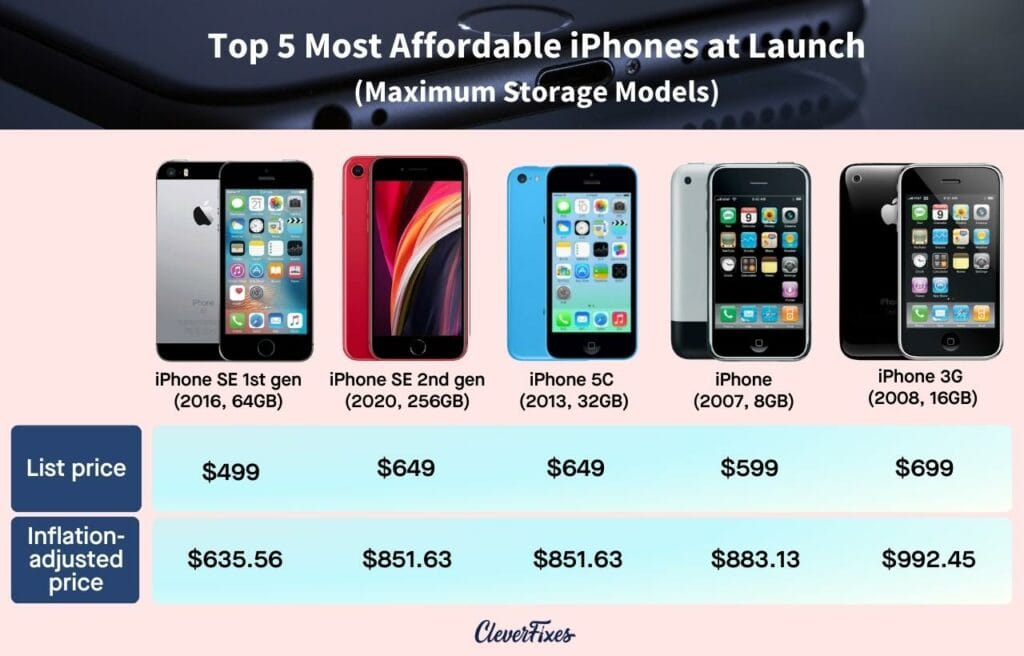
- iPhone SE (1st gen) (2016, 64GB) – List price – $499; Inflation-adjusted price – $635.56
- iPhone SE (2nd gen) (2020, 256GB) – List price – $549; Inflation-adjusted price – $648.44
- iPhone 5C (2013, 32GB) – List price – $649; Inflation-adjusted price – $851.63
- iPhone (2007, 8GB) – List price – $599; Inflation-adjusted price – $883.13
- iPhone 3G (2008, 16GB) – List price – $699; Inflation-adjusted price – $992.45
Reflecting on the range of iPhones introduced over the years, the iPhone SE (1st gen) and iPhone SE (2nd gen), both with 64GB storage capacity, stand out as the most cost-effective models at their respective launches, particularly when adjusted for inflation.
The iPhone SE (1st gen) was unveiled on March 31, 2016, and was marketed as a more budget-friendly option in Apple’s lineup. Despite its lower price tag of $499 for the 64GB model (which equals approximately $635.56 when adjusted for 2023 inflation), it packed a powerful punch with the same advanced A9 chip found in the iPhone 6S, a 12-megapixel camera capable of 4K video recording, and a compact 4-inch display that appealed to fans of smaller phones.
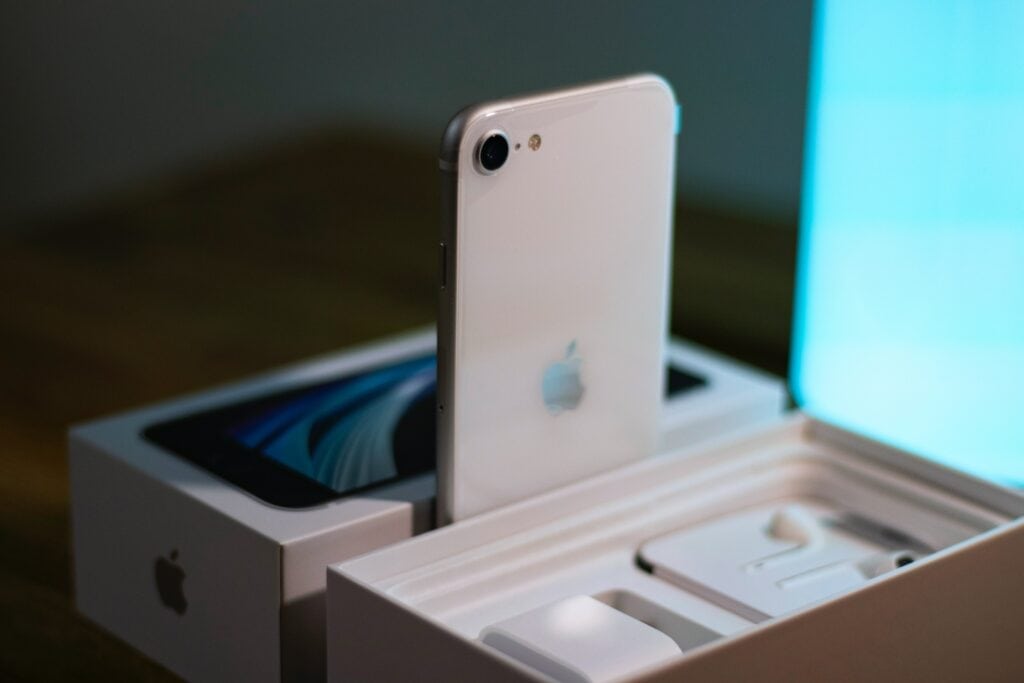
Four years later, on April 15, 2020, Apple launched the iPhone SE (2nd gen), building on the success of the original SE model. Priced at $449 for the 64GB model ($471.27 when adjusted for 2023 inflation), it presented an appealing mix of affordability and performance. This model incorporated the powerful A13 Bionic chip (used in the iPhone 11 series), a single-lens 12-megapixel rear camera system with features like Portrait Mode, and reintroduced the popular compact form factor with a 4.7-inch display.
These two models, offering robust performance at a relatively low price point, underscore Apple’s commitment to providing a range of products that cater to different consumer needs and budgets. Despite their affordability, both SE models bear testament to Apple’s knack for balancing cost, performance, and compact design.
A full list of iPhone models, their launch years, and prices (original and inflation-adjusted) are listed below:
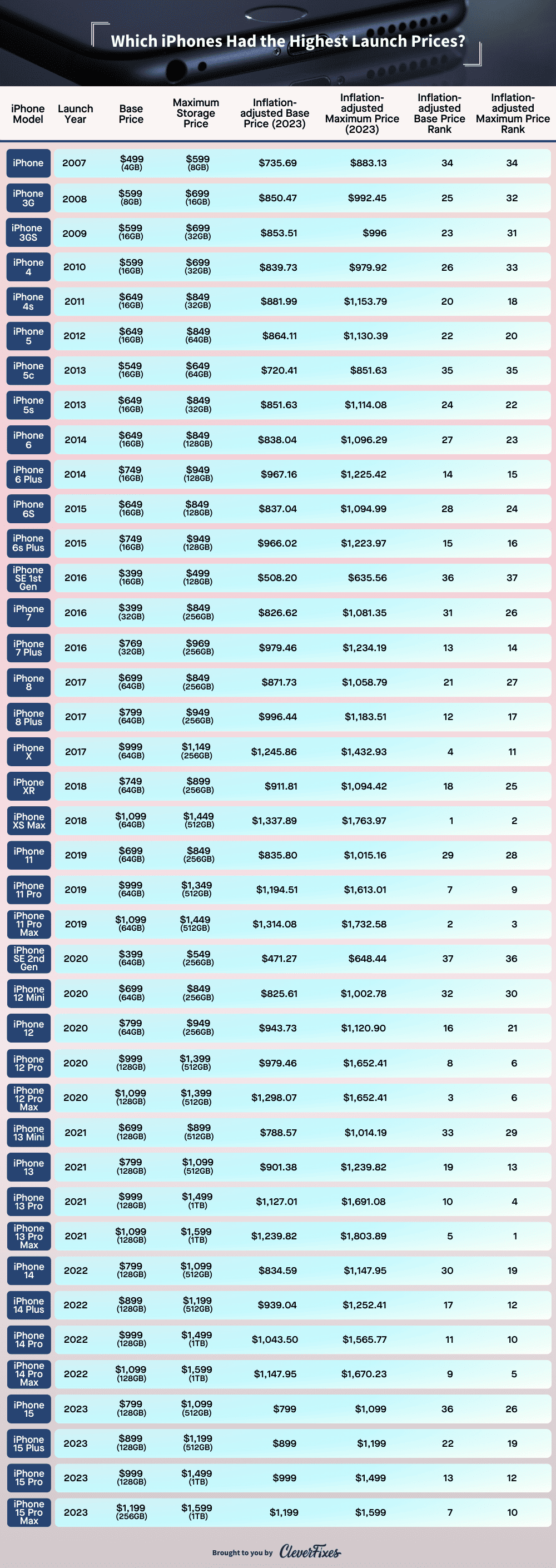
Are iPhones getting more pricier?
There’s a common perception that iPhones have been consistently increasing in price. While there’s some truth to that, a more nuanced examination reveals that the situation is not as straightforward as it seems.
Going back to 2007, the first-generation iPhone was priced at $499 for the 4GB variant. If we adjust this cost for inflation to represent 2023’s value, the price comes out to be approximately $735.69. When compared to the iPhone 14 Pro Max from 2022, the base model (128GB) was launched at $1,099, but when translated to 2023’s projected prices using inflation, it stands at around $1,147.95.

While there is an evident increase in the prices, it’s important to consider what you’re paying for. Each new iPhone iteration introduces significant technological enhancements. This includes better processors, upgraded camera systems, increased storage capacities, and novel features such as Face ID, LiDAR scanner, and 5G support. These advancements contribute to the value proposition of the newer models.
Apple has also made efforts to expand its market by introducing more cost-effective models, such as the iPhone SE, and models like the iPhone XR and iPhone 11. These models, when adjusted for inflation, present a more affordable price point than their flagship counterparts.
So, are iPhones getting more expensive? Yes and no. While the price tag of flagship iPhone models has grown over time, even after adjusting for inflation, Apple’s evolving product lineup ensures the availability of lower-cost options. The perceived increase in price, therefore, depends heavily on which models are under consideration.
Wrapping up

Our deep dive has shed some fascinating light on iPhone pricing.
While iPhones have become more expensive in absolute terms, the increase in prices isn’t as drastic when considering the effect of inflation. Plus, the value proposition of iPhones, with regard to technical specifications and features, has markedly improved over the years.
From the iPhone XS Max and the iPhone 13 Pro Max, which stand as the costliest iPhones at launch, to the iPhone SE (1st and 2nd gen), which offered the most cost-effective entry into the iPhone universe, we’ve explored the full range of iPhone pricing.
At the end of the day, Apple continues to offer a broad range of options to match different consumer segments. Whether you’re after the latest tech or shopping on a budget, there’s an iPhone for you.
As new iPhones are sure to keep coming, we can’t wait to see what surprises Apple has in store for us in the future.
Methodology
To find out the most expensive iPhones at release, we gathered all US prices of every iPhone model during their launch date. The figures used are off-contract prices, whenever possible, as Apple originally exclusively sold iPhones with a contract until 2009. We then used the US Inflation Calculator tool to adjust the prices for inflation (2023). Note that at the time of this study, the US Inflation Calculator uses the US government CPI data published on August 10, 2023.
Fair Use Statement
If you’re interested in covering this research, we encourage you to use any of the content included above. We just ask that you attribute CleverFixes fairly in your coverage and provide a link to our website so that your audience can learn more about our work

